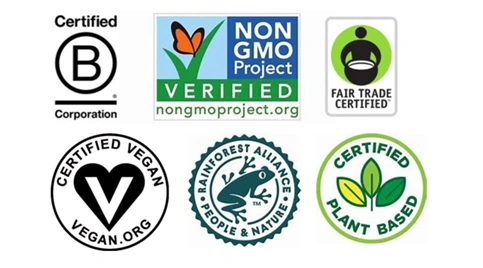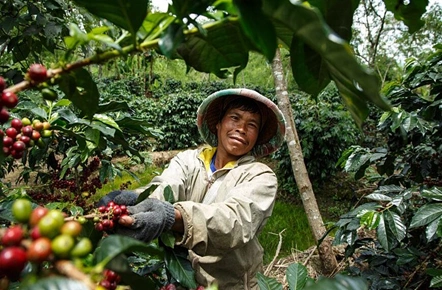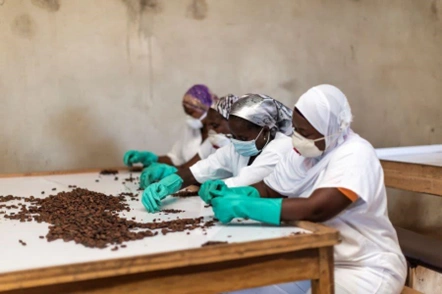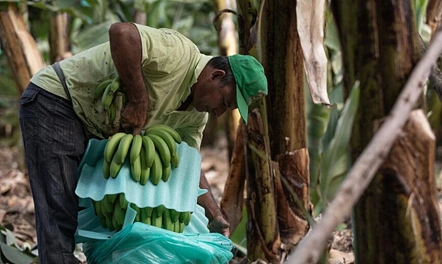Green Food, Green Planet: The Green Food Industry in the Green Supply Chains
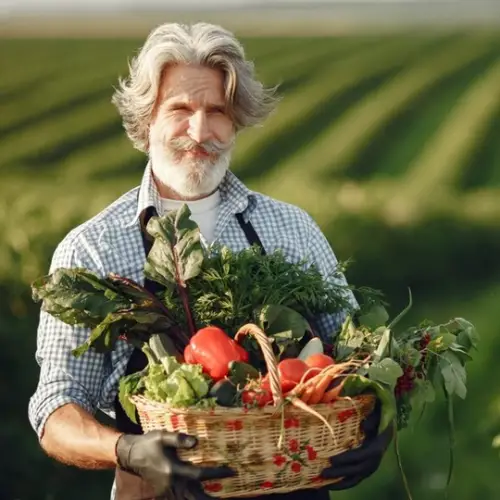
Knowledge
- Basic theoretical knowledge of the principles and practices of the environmentally responsible food industry and green supply chain
- Use of scientific resources in research and analysis of sustainability strategies
- Knowledge of current food market trends and sustainable innovations
Skills
- Developing research capacity in sustainable production practices and green supply chains
- Students will be able to critically analyse sustainability strategies and evaluate their effectiveness
- Students will be able to independently formulate strategies to improve green supply chains and achieve sustainability goals.
- Develop presentation skills, including the ability to present information clearly and convincingly
Responsibility & Autonomy
- In teamwork, they learn how to work together effectively, sharing responsibility and results
- Students develop a responsible attitude towards sustainability and understand its importance for the global environment
- Students will recognize the importance of ethical decision making when developing sustainability and corporate strategies
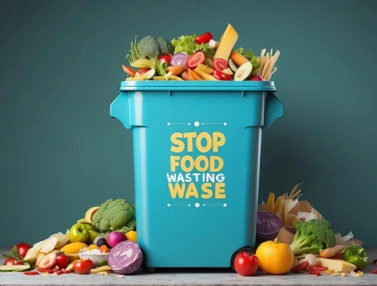
Sustainability and environmental awareness of the food industry are therefore increasingly important in the modern economy. The concept of a "green supply chain for the food industry" is not only a new trend, but one of the most important strategies for sustainable development in the future.
A green supply chain is an integrated system that takes into account environmental impacts at all stages of food production, processing and distribution. It aims to use natural resources efficiently, minimise waste and reduce carbon emissions. Key elements of a green supply chain include sustainable agricultural practices, the use of renewable energy sources and environmentally friendly packaging solutions.
The conventional food industry causes significant environmental pressures, including water and soil pollution, greenhouse gas emissions and biodiversity loss. The implementation of a green supply chain contributes to reducing the environmental footprint, mitigating climate change and ensuring a sustainable future.
Did you know that a number of well-known companies are already using green supply chains for their environmentally responsible food production, e.g.:
- Danone, many of their products are organically farmed and their packaging is sustainable;
- Alter Eco, a chocolate and coffee producer, is committed to producing products from sustainable and ethical sources;
- BrightFarms is very special because it operates hydroponic greenhouses in urban environments, reducing the distance food is transported and the associated carbon footprint.
This WebQuest aims to showcase the solutions needed for environmentally responsible food production, such as sustainable production practices, carbon footprint, waste reduction, social responsibility and safe, healthy products. The aim is to provide food consumers with a comprehensive approach to environmentally sustainable food concepts and solutions.
You will be grouped in teams to look for environmentally responsible food companies or products that apply the green supply chain concept. Assess the extent to which companies are achieving sustainability goals (e.g., waste reduction, carbon footprint reduction, sustainable production practices). Share the results of the research in a presentation. Afterwards, discuss together what are the obstacles to sustainable food production and what good solutions you have found. Then, on the basis of the information gathered, put together a proposed strategy to improve the green supply chain of your chosen company or product. At the end, together with the teacher, highlight the best practices, ideas and future challenges for the green food industry, such as the population explosion, protein supply, soil conservation, use of organic and natural ingredients, healthy eating or reducing carbon emissions.
Come on, show us how good you are at researching, presenting and strategizing!
To succeed follow this step-by-step process!
1. Introduction!
Listen to your teacher while they briefly introduce the concept of the green food industry and the green supply chain, the purpose of the lesson and the tasks of the teams. Help can be found in the useful links.
2. Form a team!
This is the easy part! In this section, the whole class should be divided into teams of 3. Each team will choose an environmentally responsible food company or product. Each team should research the green supply chain of the chosen company or product and assess how the company contributes to sustainability goals (e.g. waste reduction, carbon footprint reduction, sustainable production practices).
3. Get information! - Living Lab Activity
Get information on the supply chain of the chosen company or product. Assess how it contributes to the company's sustainability goals (e.g., waste reduction, carbon footprint reduction, sustainable production practices). Feel free to interview someone from the company to get even more detailed insights. Look at the company or product you have chosen and try to answer the following questions:
- Procurement: How does the company source raw materials? Are sustainable sources used? Are they using sourcing sources?
- Manufacturing Processes: What technologies and energy sources are used in production? What measures are taken to minimise waste and pollution?
- Packaging and Distribution: What types of packaging materials are used? How environmentally friendly and recyclable are they? How are products transported and distributed?
- Waste management: How is waste from production and consumption handled? What strategies are used to recycle and reduce waste?
- Corporate Social Responsibility (CSR): What are the company's CSR practices? How do you support local communities and ensure fair working conditions?
- Product Life Cycle and Circular Economy: How durable are the products? How durable are products? To what extent are the principles of the circular economy supported?
- Market and Consumer Perception: How do the market and consumers respond to the company's sustainability efforts? What marketing strategies are used to promote green products?
- Ecological Footprint and Efficiency: What measurements are being taken to reduce the ecological footprint? How is sustainability performance evaluated and what targets are set for the future?
Through a comprehensive examination of the above aspects, you will gain deeper knowledge about the functioning of the green supply chain and how food industry companies contribute to sustainable development.
4. Make a presentation!
Each team should collect their research results and prepare a short presentation (5-7 slides in PowerPoint, Prezi or another design tool). The presentation should include the following elements:
- A short presentation of the chosen food company or product.
- A presentation of the green supply chain operation.
- Strategies to achieve sustainability goals, e.g.: sustainable production practices, carbon footprint reduction, waste reduction, social responsibility, safe and healthy products, transparency and traceability, innovation and technology solutions.
5. Present and evaluate!
Each team will be given 5 minutes to make their presentation. After the presentations, you can ask questions and give feedback to each other together with the other teams and the teacher.
6. Create a strategy!
Each team should develop a proposed strategy on how to improve the green supply chain of the company or product of their choice. Prepare a short-written summary of the proposed strategy.
7. Summarise briefly
The teacher gives a short summary of the experience, highlighting the best practice and ideas presented. Then, in the useful links, look together at the resources "Future challenges and opportunities for an environmentally responsible food industry".
INTRODUCTION:
- Green supply chain (image_1):
- Green food supply chain (image_2):
- Sustainable food (web): Food Sustainability, a model against pollution - Iberdrola
- Food and sustainability: is it a choice? (scientific article): Food and Sustainability: Is It a Matter of Choice?
COMPANIES:
- Alnatura (Germany) (video_1): Alnatura, Germany: Sustainable, Industry 4.0 logistics
- Eosta (Netherlands) (video_2): Fighting Food Waste - Eosta - Nature & More
- La Fageda (Spain) (video_3): La fàbrica de La Fageda per dins
- Yeo Valley (UK) (video_4): Yeo Valley Organic - sustainable farming in Somerset
PRODUCTS:
- Alnatura organic food (web_1): Alnatura organic foods • Migros
- Ecover cleaning products (web_2): Ecover - Wikipedia
- Tony's Chocolonely chocolates (web_3): This is our mission and story - Tony's Chocolonely
FUTURE CHALLENGES AND OPPORTUNITIES FOR THE ENVIRONMENTALLY RESPONSIBLE FOOD INDUSTRY:
- Food of the future_1 (scientific article): (PDF) The Future of Food
- Food of the future_2 (video_1): Future of Food
- Sustainable food production (video_2)
Become a conscious sustainable food consumer! There are a number of good practices in green food production that aim to promote sustainability and minimise environmental impacts, such as:
- Organic farming - based on avoiding the use of chemical pesticides and fertilisers, instead using natural methods to improve soil fertility and crop protection. Organic farming helps maintain soil health, reduce water pollution and support biodiversity.
- Biodynamic farming - a holistic approach that takes the whole ecosystem into account. Biodynamic farmers follow natural rhythms and use specific biodynamic formulations to improve soil and plant health.
- Agroecological farming - applies ecological principles to the design and management of agricultural systems. Agroecology aims to increase biodiversity, maintain soil health and develop sustainable production systems.
- Precision farming - Precision agriculture uses digital technologies to increase the efficiency and sustainability of production. Precision farming allows for the precise application of water, fertilisers and pesticides, minimising environmental impact.
- Permaculture - a design philosophy based on the observation and mimicry of ecological systems. Permaculture aims to develop self-sustaining and regenerative agricultural systems that require minimal external inputs.
- Carbon sequestration agriculture - aims to sequester carbon dioxide in the soil, which contributes to the fight against climate change. This includes practices such as minimizing tillage, using cover crops and agroforestry.
You can become a conscious, nature-conscious food consumer by checking the certification of the product (Fair Trade, USDA Organic, Rainforest Alliance, or B Corporation certification), reading the product label (look for signs of sustainability), buy local and seasonal produce, visit sustainable food platforms (Thrive Market or Farmdrop) and share your experiences with friends and family about the importance of green supply chains and the companies that support these practices.
Fair Trade - promotion of sustainable and ethical procurement
Fair Trade aims to promote sustainable food production and environmental protection through a unique two-pronged approach.
By meeting Fair Trade standards and obtaining Fairtrade producer certification, farmers must improve soil and water quality, manage pests, avoid the use of harmful chemicals, manage waste, reduce greenhouse gas emissions and protect biodiversity. This will allow farmers to improve their land and develop nutrient-rich soils that support healthy crops and encourage wildlife to control pests and diseases.
Fair Trade has 5 principles to reduce inequality and promote sustainable development:
- Fair price - producers receive a fair price that covers the costs of production, ensures a fair livelihood and a reasonable profit.
- Prohibition of child labor - all forms of child labor are prohibited.
- Decent working conditions - healthy working conditions, wages that workers can live on
- Development of local communities - e.g., drinking water, roads, education, support for health facilities
- Environmental sustainability - harmful chemicals and genetically modified crops are excluded in the fairtrade system. Supported production technologies protect the precious ecosystem and safeguard the health of both producer and consumer.
Today, nearly half a thousand producer cooperatives and smallholder Fairtrade farms in 50 countries in Africa, Asia and Latin America provide better living conditions and livelihoods for nearly a million farming families, while the rest of the world, as buyers and consumers, have access to agricultural products that are free of extra costs, lower in price and labelled, and therefore from clean sources.
Links:
www.fairtrade.net
Sustainable agriculture under Fairtrade terms
Koperasi Baithul Qiradh Baburrayan (KBQB), Indonesia. Jumiran is a member of the KBQB cooperative and grows his crops on a one-hectare estate in accordance with Fairtrade principles:
Source: https://images.fairtrade.net/_articleFull/FLO20617.jpg
Women workers sort cocoa beans at a fair-trade farm in Côte d'Ivoire, West Africa.
Source: https://cdn-5d5e92c6f911c809502507a6.closte.com/wp-content/uploads/2022/03/fairtrade-nok.jpg
Mounting export costs and plummeting import prices are directly impacting banana farmers’ and workers’ livelihoods. The Fairtrade Minimum Price will provide ‘vital support’ to struggling producers.

